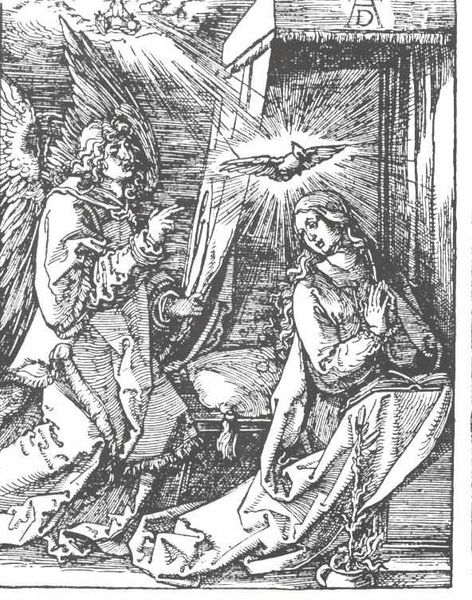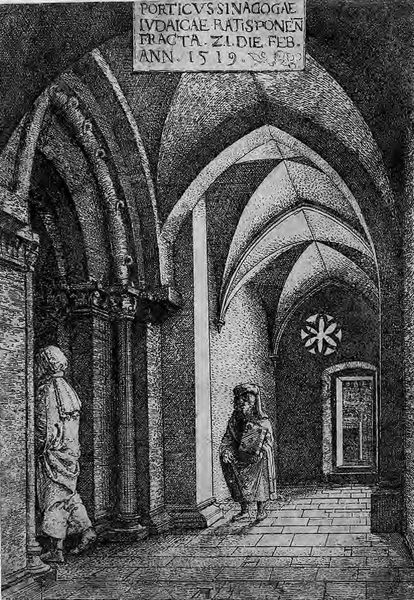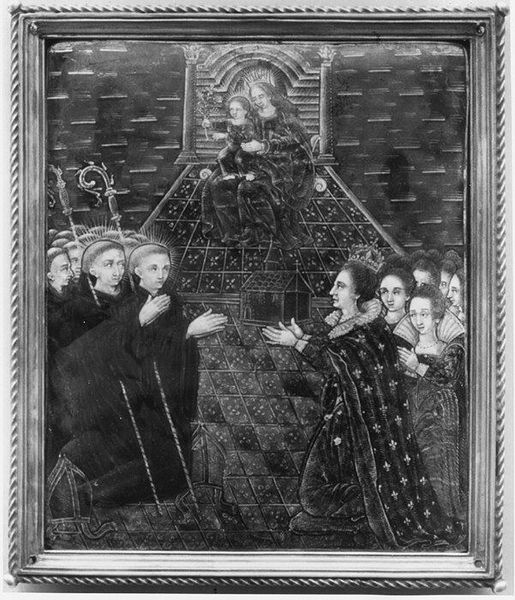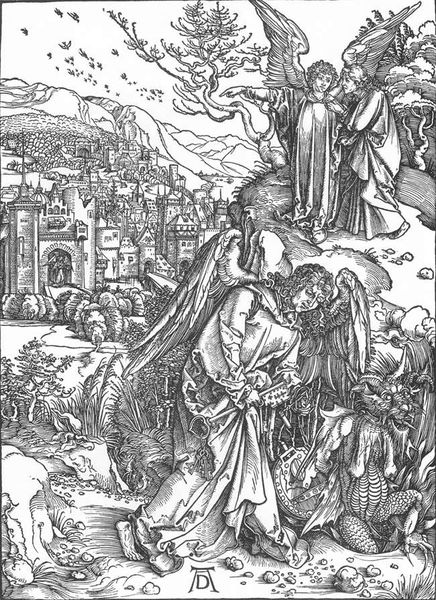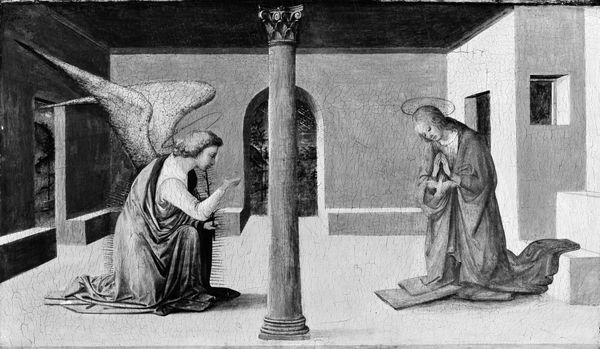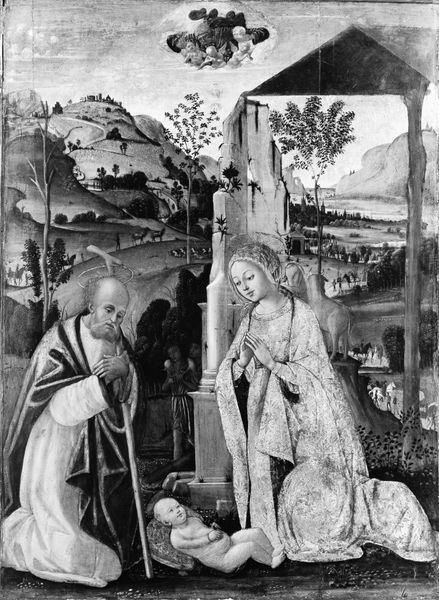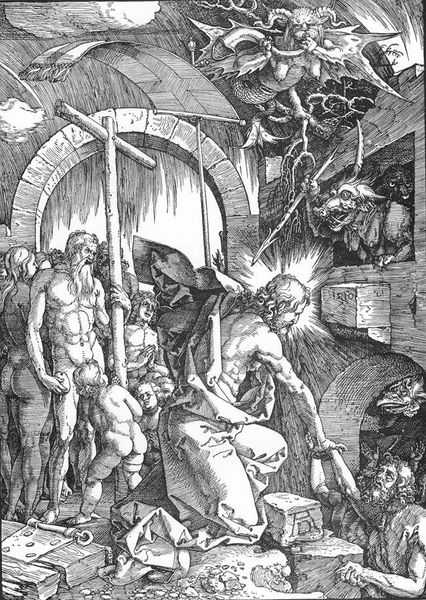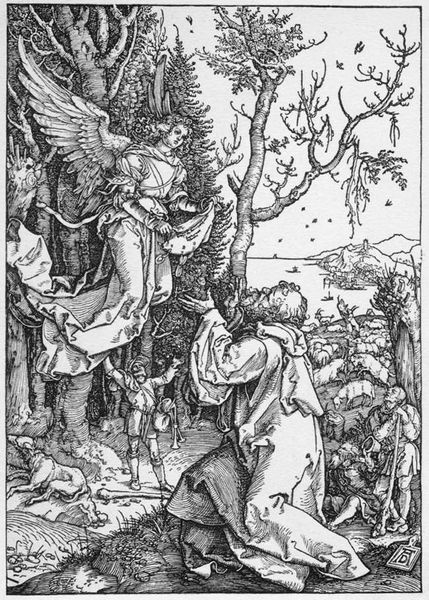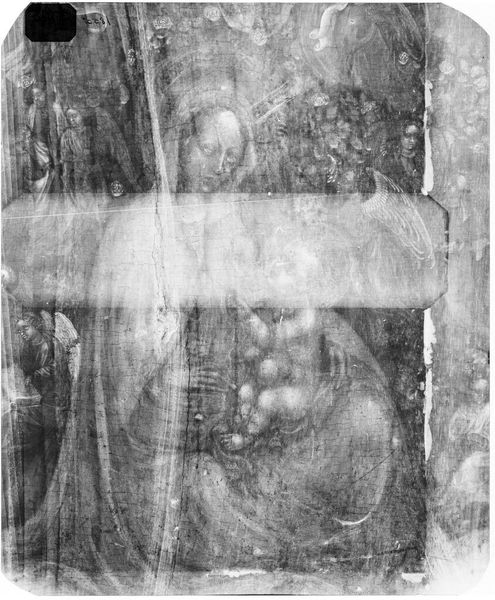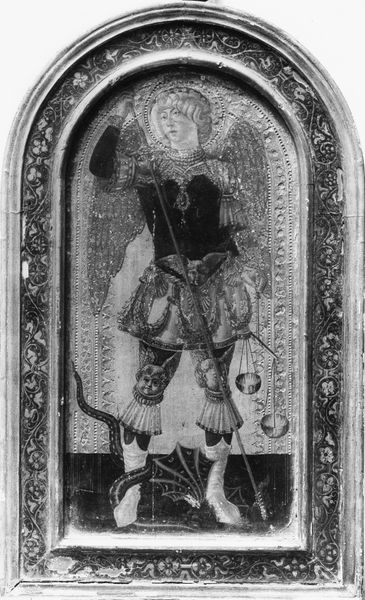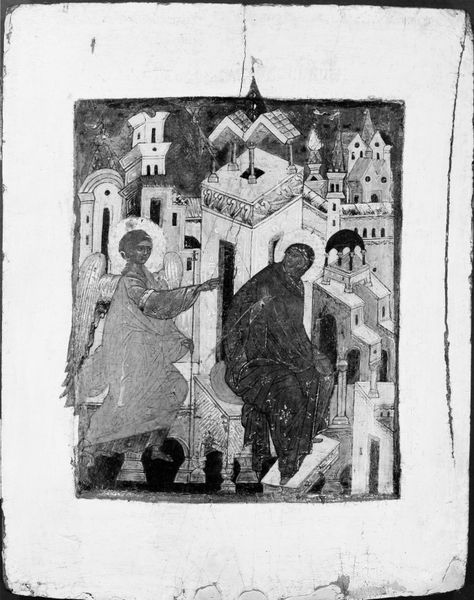
tempera, painting
#
medieval
#
narrative-art
#
tempera
#
painting
#
figuration
#
line
#
history-painting
#
international-gothic
#
virgin-mary
#
angel
Dimensions: Overall 17 7/8 x 14 7/8 in. (45.4 x 37.8 cm); painted surface 15 1/4 x 14 in. (38.7 x 35.6 cm)
Copyright: Public Domain
Editor: Here we have "The Annunciation," made sometime in the early 1400s by an anonymous artist, rendered in tempera. It has a somewhat austere, dreamlike quality. What's your take on this piece? Curator: From a materialist perspective, I find the use of tempera fascinating. It’s a laborious process, mixing pigment with egg yolk, demanding a very different pace than, say, oil painting. Consider the economic investment in materials and skilled labor. Who commissioned this work, and what does its existence tell us about the patrons, the workshop practices, and the accessibility of such art? Editor: That's a perspective I hadn't considered. The fact that it’s tempera automatically changes its accessibility? Curator: Exactly. The medium dictates so much about production and consumption. Oil paints, which gained popularity later, allowed for greater blending and realism, potentially appealing to a wider market. But tempera, with its specific requirements, connects us to the traditions and social hierarchies of its time. Editor: Looking at the buildings and even the angel’s garb, everything seems very deliberate. Were certain pigments or materials seen as more prestigious? Curator: Absolutely. Think about the cost and source of ultramarine, for instance, ground from lapis lazuli. Its use signaled wealth and devotion. Even the scale of the panel matters – was it for a private devotional space, or a larger church commission? What might the cost of the gold leaf have implied? Editor: So, reading the artwork isn’t just about iconography but understanding the socio-economic elements embedded within the materials themselves? Curator: Precisely. We understand art by understanding the means and the culture that produced it, connecting artistry to broader questions of labor, value, and belief. Editor: Thank you, that was fascinating; now I’m curious to explore further these aspects of art production.
Comments
No comments
Be the first to comment and join the conversation on the ultimate creative platform.
